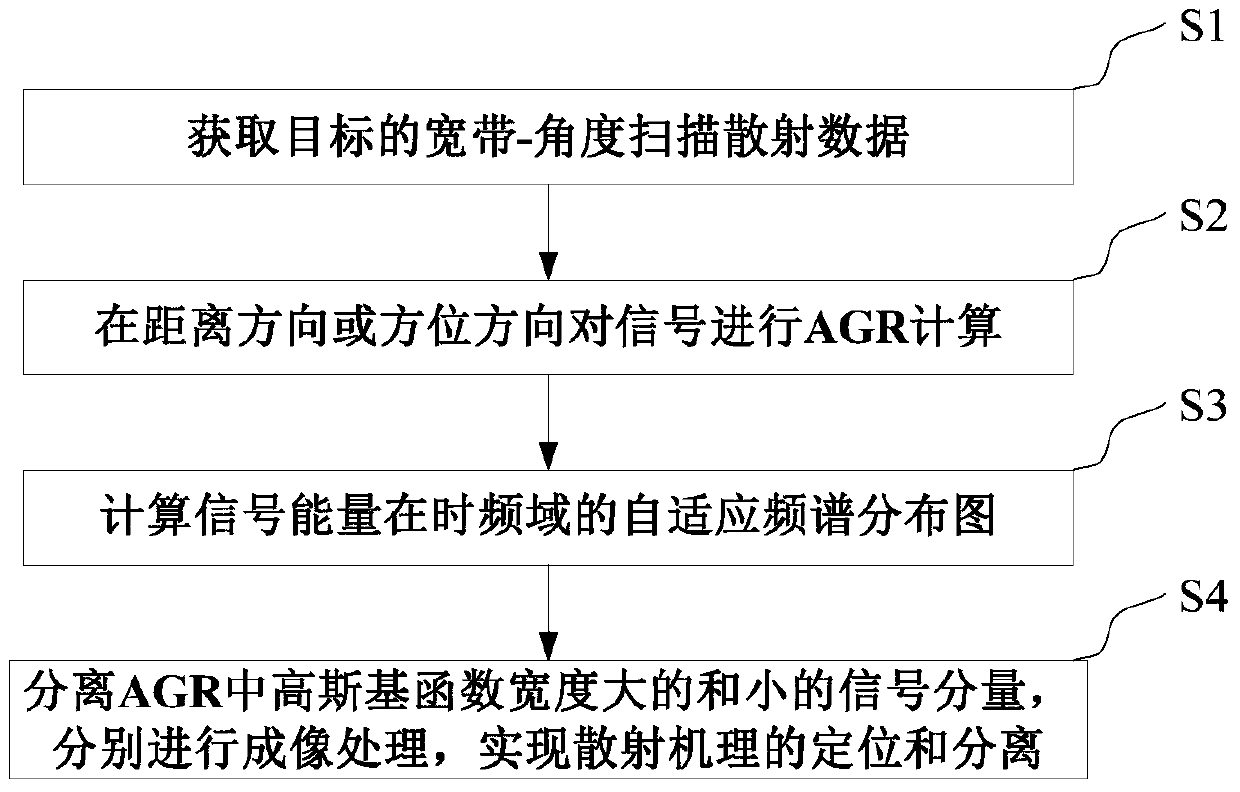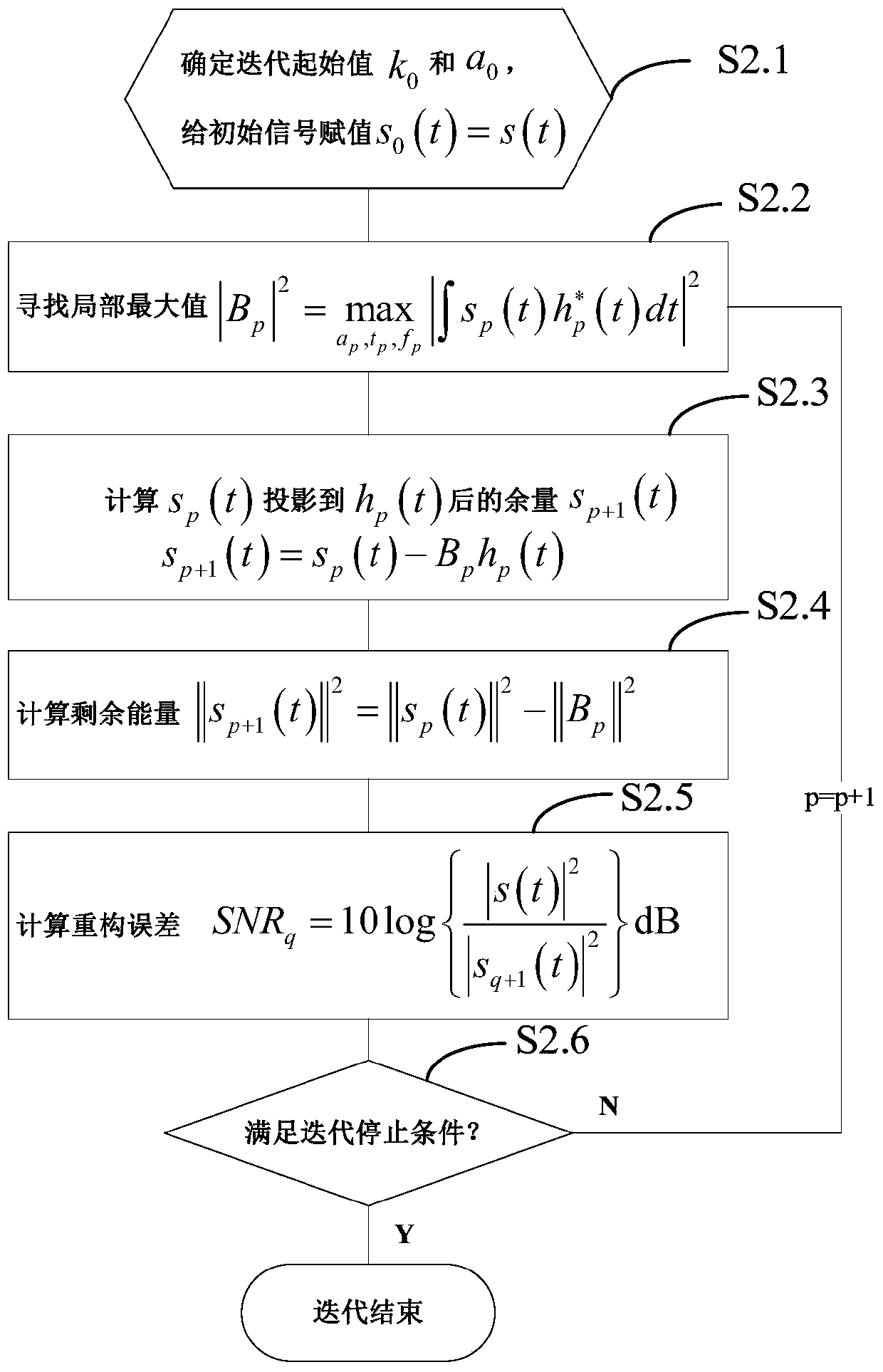Identification and Extraction Method of Scattering Mechanism Based on Adaptive Gaussian Expression
A technology of scattering mechanism and extraction method, which is applied in the research field of target electromagnetic scattering characteristics, can solve the problems of no target electromagnetic scattering characteristic analysis, no time-frequency analysis algorithm, etc.
- Summary
- Abstract
- Description
- Claims
- Application Information
AI Technical Summary
Problems solved by technology
Method used
Image
Examples
Embodiment Construction
[0054] based on the following figure 1 with figure 2 , specifically explain the preferred embodiment of the present invention.
[0055] Such as figure 1As shown, the present invention provides a method for identifying and extracting scattering mechanisms based on adaptive Gaussian expression, comprising the following steps:
[0056] Step S1, acquiring broadband-angle scanning scattering data of the target;
[0057] Step S2, performing AGR calculation on the signal in the distance direction or the azimuth direction;
[0058] Step S3, calculating an adaptive spectrum diagram (Adaptive Spectrogram, ADS) of signal energy according to the AGR calculation result; the adaptive spectrum diagram is a distribution diagram of signal energy in the time-frequency domain;
[0059] Step S4, separating the signal component with a large Gaussian basis function width and the signal component with a small width in the AGR, and performing ISAR imaging respectively to realize the positioning ...
PUM
 Login to View More
Login to View More Abstract
Description
Claims
Application Information
 Login to View More
Login to View More - Generate Ideas
- Intellectual Property
- Life Sciences
- Materials
- Tech Scout
- Unparalleled Data Quality
- Higher Quality Content
- 60% Fewer Hallucinations
Browse by: Latest US Patents, China's latest patents, Technical Efficacy Thesaurus, Application Domain, Technology Topic, Popular Technical Reports.
© 2025 PatSnap. All rights reserved.Legal|Privacy policy|Modern Slavery Act Transparency Statement|Sitemap|About US| Contact US: help@patsnap.com



